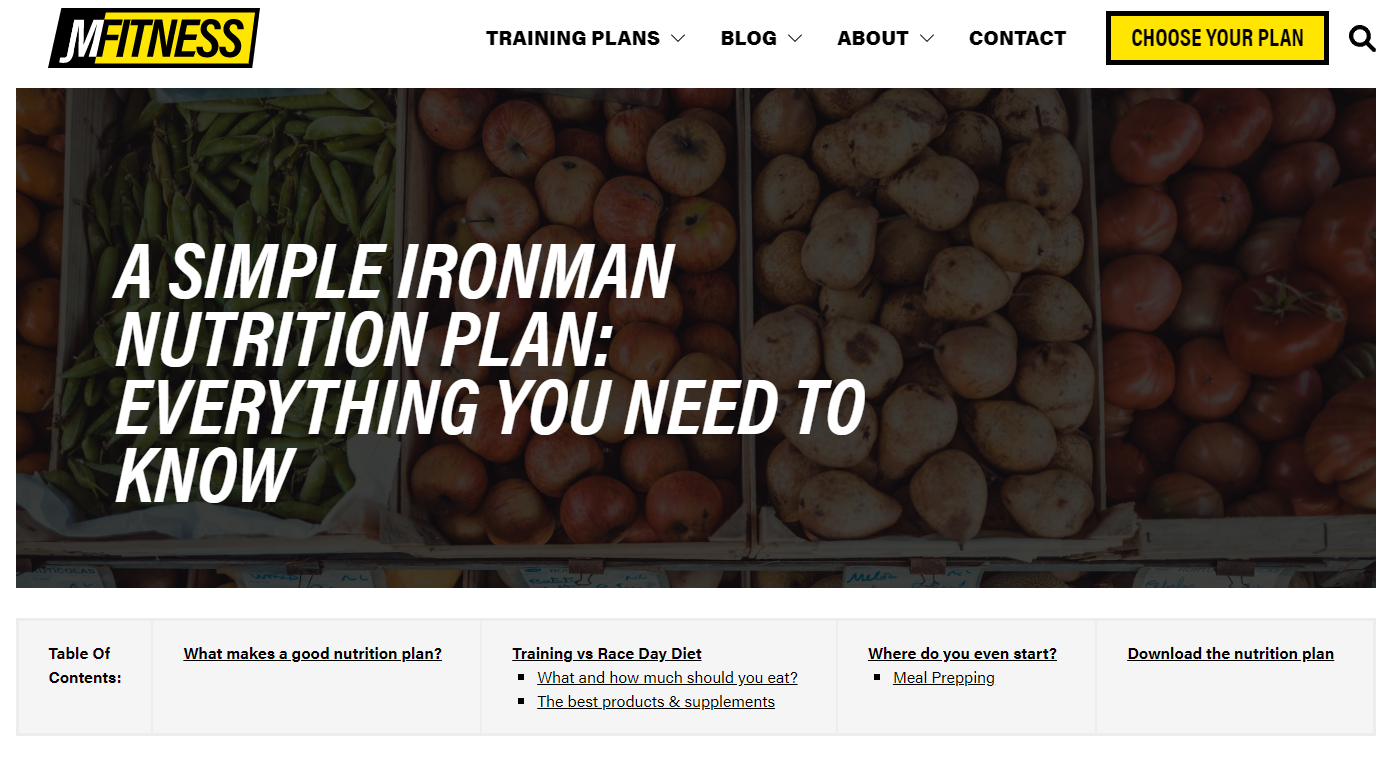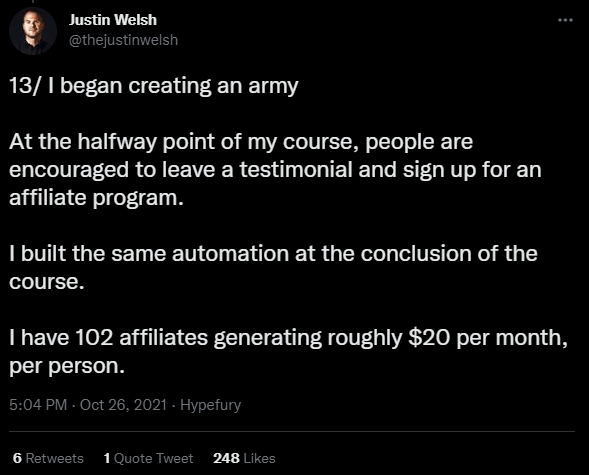How to sell digital products
Table of Contents Jump to:
Jump to:
Table of contents
TL;DR: Not sure how to sell digital products online? Our step-by-step guide will walk you through it!
All that work designing your product, writing the perfect copy, and now it’s finally time to sell it. How exciting!
You’re ready to tap into that passive income stream and watch your bank account grow steadily. You have access to millions of people who may want to purchase your digital product, and with global e-commerce sales predicted to hit $7.4 trillion by 2025, you’ve got a lot to be excited about.
The potential is there, but it’s not quite that simple. You’ve done the easy part—now onto the hardest part of your journey: selling. As someone with hard-won experience struggling to sell my digital products, I know the journey well. And I know you can get the sales, grow your bank account, and enjoy watching all that hard work pay off. Start with finding a sales page template builder that’s optimized for conversion, like Flodesk Checkout. Or, you can look at other options, like Leadpages alternatives.
So, if you’ve already got a plan for how to sell your digital product online or you need help mapping out your route, we’re here to help you go from “listed” to a long list of customers.
Get unlimited email sends and subscribers with Flodesk
We’ll never increase pricing because your email list is growing
Benefits of selling digital products online
We won’t lie to you—creating a digital product is work. But when you look at all the benefits, it pays off to put the time and effort in. Here’s why we love selling digital products:
- You have to potential to make money in your sleep. Hey there, passive income!
- Digital products typically yield higher profit margins than physical products (we’ll show you how to price your digital download).
- They’re the most effective way to grow your income stream (passively), so you can leave your 9-5 (if you want).
- Do you have a computer, wifi connection, and dedication? Then you have everything you need to sell a digital product. Oh, and Flodesk Checkout, of course.
- Reach a global audience. You can sell nearly anywhere!
- Your income is limitless. Creators like Justin Welsh have topped outrageous figures like $1.3 million in 27 months from selling online courses.
- Selling digital products doesn’t require production or shipping costs, inventory, or logistics, so it’s super simple.
- You can automate a majority of the work involved in digital product delivery.
- You can build an engaged audience—the kind that will open up countless new and exciting opportunities for you.
Are there any drawbacks to selling a digital product online?
Unlimited income potential with minimal work sounds amazing, right? But selling a digital product online doesn’t just happen like that.
Before your product can effortlessly rake in the Benjamins, you have to put the work in and stay committed to overcoming some tough challenges:
- You have to catch your ideal customer’s attention and convince them to buy your product.
- You have to overcome tight competition. Unless your product is genuinely unique, the market is highly competitive.
- Piracy is a real threat—thieves can easily steal and resell your digital products.
- Exponential growth can be tough to handle. Harder still is knowing when you need help—most successful creators hire assistants, which comes with its own challenges.
We know you can do it though. So, when you’re ready to start selling, read on. We’ve got you!
How to sell digital products online
Step 1: Define your target market
Before you create your digital product, identify your target audience. This will help you understand their pain points and create a product that feels tailored to them. But if you got really excited and created a product before defining your market, that’s okay. We’re here to help.
Here’s how it boils down: it’ll be tough to be successful if you’re not specific about who you’re selling to. “The riches are in the niches,” as they say. Think about why someone would buy from you and what your goal is (besides raking in all that cash). This will help you define your audience.
A few things to consider about your ideal customer:
- The problems they face
- The language they use
- What they want to achieve
- What they’re afraid of.
- What causes them pain.
- What solutions already exist (and why your ideal customer isn’t using them)
- How your product could impact their lives
You can increase the odds in your favor by getting highly specific about your target market. For example, lots of people want to be fit and healthy, but far fewer want to do so to dominate the Ironman competition. That gives JM Fitness’ $27 Ironman Nutrition Plan a unique market to cater to—one far more likely to buy because the product serves their specific needs.
What makes this example such a good one?
- It serves a niche audience.
- The page hits on the struggles of being a regular person with big physical goals.
- It uses language anyone can understand, helping create a bond with the reader.
- The page provides valuable info, even if a viewer doesn’t buy the nutrition plan.
- It paints a clear picture of what’s in store for the reader and how it will help them.
Step 2: Create an online store or landing page
Your options for selling online are nearly limitless. There’s Gumroad, Kajabi, Etsy, Samcart, and even Amazon. While it certainly doesn’t hurt to sell on these sites, it’s worth investing in your own platform (or a sales experience that matches the look and feel of your site, like Flodesk Checkout) or finding alternative options. Need help? Check out our Samcart alternatives blog post!
Flodesk Checkout is easy to set up and includes a sales, checkout, and delivery page to create a seamless ecommerce experience. Customers can buy and receive the digital downloads within seconds, and you can even add them to your email list if they opt-in when they buy from you. Everybody wins.
Check out Flodesk superstar customer An Indigo Day for inspiration on how your ecommerce store can connect the dots between your website, social media, lead generation, and sales.
Get unlimited email sends and subscribers with Flodesk
We’ll never increase pricing because your email list is growing
Step 3: Drive traffic
Whether you built your own online store or sell via a platform like Amazon or Flodesk Checkout, you’ll need to guide people to your landing page or shop.
There are seven strategies online retailers use to get people (aka “traffic”) to their website or store page. Let’s take a quick look at each!
Search engine optimization (SEO)
When done correctly, SEO can deliver big wins. Imagine your ideal customer needs your product, they Google what they’re looking for, and your product page pops up. They click. It’s a win. And despite Gen Z using social media as their search engine, Google and other search engines remain the lords of queries.
68% of online experiences still originate in that famous search bar, and it’s where devices like Alexa pull their oh-so-helpful answers. Moral of the story? SEO needs to be part of your game plan.
Keep in mind though that the internet is full of misleading “advice” on how to do SEO. And since this isn’t a post on SEO tactics, we’ll drop the ultimate SEO truth before moving on: as long as you put the user experience first, you’re on the right track. All Google cares about is providing excellent service to its users, so if you’re doing the same, you’re golden.
One final note: SEO is a long-game play. You won’t see overnight results, so get started and pair it with other traffic-driving strategies, like social media.
Want to sell to the masses? Build a community on social media first. Your product can help dictate where you sell. For example, if you have a copywriting course, LinkedIn is a safe bet. But if you’re selling a video-based products, Instagram, TikTok, or YouTube may be a better fit.
There’s no need to conquer every platform all at one, and in fact, we don’t recommend it. It’s similar to the “sell to everyone” approach.
The key to winning with social media and driving followers to your product is to show up consistently and provide value. You should aim to entertain, educate, inform, or inspire your audience.
It’s tempting to sell, sell, sell, but on social media, you want to have a variety of posts, not just sales content. If you provide enough value to your audience and create a strong sense of community, they’ll sell themselves on your product.
Natalie Franke’s Instagram feed is the perfect example of how to use social media to gain attention for your digital products by first providing value and building a strong community:
- Natalie shows off her personality in a genuine and relatable way—perfect for building connections.
- She tells personal stories, so you feel both part of her story and inspired for your own journey—both valuable takeaways.
- The product pitches feel natural, not forced.
- She includes plenty of wisdom that gives you immediate value.
Content marketing
Content marketing takes a holistic approach, including all content, from SEO to social media to your blog. If you get it right, content marketing will consistently drive traffic and potential customers straight to you.
However, you want to apply the same rules we discussed earlier: don’t try to oversell, and always put the user experience first. Content marketing is a long-term game, unless you’re fortunate enough to have a large audience already. So, if you want to add some fuel to the fire, keep reading. We’ve got some suggestions!
Influencer marketing
Celebrities, including social media influencers, can sell products like they’re giving away free money. Their large audiences could become your best customers (if your product matches their needs). But you need to choose the right influencer.
Are you selling business courses? A makeup or lifestyle influencer probably isn’t the best fit. But if you’re selling a Makeup: 101 course, they’re perfect. The key is to work with an influencer whose audience aligns with what you’re selling.
Pro tip: Don’t jump right into you ask. Like posts, and leave thoughtful comments that build trust and a genuine connection with the influencer. Build to your request gradually and authentically to increase your chances of a “yes!”
Working with influencers to market your digital product can get expensive if you’re not careful. Influencer marketing is a $15 billion dollar industry, and for good reason. The right influencer can turn a trickle of sporadic downloads into a raging river of revenue.
You don’t need to go full-on Dunkin’ Donuts and sponsor TikTok’s influencer Charli D’Amelio, who has over three million followers, to take advantage of influencer marketing.
Remember, the term “influencer” is not about how many followers a person has; a person can be an influencer with only a few thousand followers. It’s more about how engaged their community is.
Find someone with an audience that hangs on their every word and suggestion—ideally someone who would genuinely love your product—and reach out to discuss collaborating with them.
Paid ads
Pay-per-click (PPC) is a tactic marketer use to funnel leads to online stores from both Google and social media (specifically Facebook and Instagram).
It involves creating an advertisement for your digital product and paying to show that ad either at the top of Google’s search results for specific search queries, or on social media to people who have shown interest in similar topics and brands.
PPC is a powerful way to generate momentum for your digital product and boost sales. But it can get quite costly. We suggest using it to fill in the gap from longer-burn tactics like SEO and social media while they’re still building momentum.
Affiliate marketing
A simple strategy that can add some serious rocket fuel to your online product sales is incentivizing people to promote your digital product for you. Typically, you do this in exchange for a fee or a percentage of any product sales they generate.
Yes, offering a commission like this eats into your profits. But if you offer someone a super generous 50% commission, they will work extra hard to deliver sales to your door—all without you doing anything. Yes, you’ll have 50% less than if you sold the product yourself, but you likely wouldn’t have made those sale on your own.
Offer a strong affiliate program, and your product will sell itself.Imagine a scenario as Justin describes in the screenshot example below. Would you say no to $2,040 per month for doing no work to sell your product? We wouldn’t either!
Email marketing
Email marketing earns a higher average ROI than any other marketing channel—$36 for every dollar spent. That’s a 3,500% increase! This alone should convince you of one thing: you can’t afford to pass on email marketing. When thinking about how to sell your digital products, there’s no better investment of your time or money.
Email marketing is the ultimate strategy to tie every element of your digital sales presence together.
Choosing the right email provider is an absolutely critical first step. Most people decide based on a few key things:
- Price and ROI
- Ease of use
- Email delivery rates
- Features and reporting
- Design quality
Looking for a scalable solution that’s scalable? You’ve come to the right place—we offer the only flat-rate forever fee that never increases. We also offer highly-rated tutorials to help you conquer everything from sending your first email to lead magnet automation, and how to write a product launch email.
Get unlimited email sends and subscribers with Flodesk
We’ll never increase pricing because your email list is growing
Step 4: Repeat, repeat, repeat
If you’re happy with one product, we won’t stop you. But if you’re ambitious and want to create more products, roll back to step one and repeat as needed. Everything you’ve already done will help you forge ahead with your next digital product.Tap into your community and keep them updated with what you’re creating next. Document the process and let them be in it with you, whether via social media, email, or both. Grab a product launch email template when it’s time to announce pre-orders and throw out some giveaways or affiliate campaigns to generate hype.
Our top marketing tips
Offer discounts and coupons
Discounts are powerful marketing tactics that can help drive sales over and over. So, the next time you find yourself grabbing a meal deal or armfuls of discounted items on the endcap of a supermarket aisle, stop and ask yourself: are you buying these items because you need or want them, or because you’re getting a deal?
Often, people don’t stop to think about how much they’re actually saving—the mere word “discount” or “saving” triggers a strong purchase impulse.
It helps that discounts play into a common persuasion strategy: comparison. When we see a higher price decrease, we want to act now and grab the bargain. The lower price seems even more appealing when we see it next to a higher one.
Take a look at this fantastic discount example from Hair for the Girls, built with Flodesk.
Focus on exceptional email marketing
The easiest way to get started with email marketing is to create a lead magnet, or what we like to call “gated content.” Here’s how the strategy breaks down:
- Your potential customer sees a social post or ad offering a free sample of your product (for example, an abridged PDF of your ebook or a free bonus introductory lesson to your course).
- They’re intrigued and all it takes to get this sample is their email address—sold!
- Your email service provider receives their email address, adds it to your contacts list and automatically sends the subscriber their freebie.
- Your email software then sends the subscriber more automated emails as written and scheduled by you; these nurture your subscriber with valuable info, discounts, and the like until they’re ready to buy.
Small business email marketing is one of the fastest ways to send product sales through the roof. By creating a lead magnet, you have a powerful marketing device that works tirelessly to keep building your list of people who have expressed interest in you, your content, and your product.
Get unlimited email sends and subscribers with Flodesk
We’ll never increase pricing because your email list is growing
Create an affiliate program
We’ve already touched on the power of affiliate marketing to get others to sell your product for you, but it bears repeating.
Incentivize people who’ve already bought your product to sell it to others for a commission. What percentage you offer is entirely up to you, but offering a solid commission will encourage people to rave about your digital product and become highly persuasive salespeople.
Why will they be so persuasive? Because almost nothing is more convincing to a potential customer than an enthused fan or a positive review from a trusted source.
Educate your audience
Educational content is an effective marketing strategy in any medium—email newsletters, LinkedIn posts, Twitter threads, TikTok videos, Instagram reels, YouTube, and more—and it has the ability to bring you all the digital product sales you need without advertising.
Teach people how to do what you do, providing value for free, so they view you as the go-to brand for anything relating to your niche.
And that’s where your product comes in. It’s the solution that ties into all the educational content you’ve been sharing—the product that makes life better for your customers.
Of course, this is a considerably more effective strategy if your product already centers around the education sphere. But it’s a powerful marketing resource to tap into for almost any business.
Offer a guarantee
Far too many brands are terrified to offer a guarantee, which could be a huge disservice. A guarantee helps reduce the feeling of risk. They help people overcome the fear of buyer’s remorse, and they give people more confidence in your product.
And the beautiful little secret underneath it all? Hardly anyone takes up a money-back guarantee, so the impact on your bottom line will be minimal. Digital product reviews are also a great way to build trust and help customers feel more at ease when purchasing your product.
Give away a freebie
When you give people something first, you increase the chance they’ll respond the way you want. It’s basic psychology, and a powerful sales technique.
A great way to do this is offering a sample of your digital product. Say you’re selling a 100-page ebook; the freebie could be a 25-page abridged version.
You are giving potential customers something valuable, which moves them further along their purchasing journey. You’re also helping them overcome their hesitancy and convince themselves your product is worth buying.
Ready to sell?
Creating a digital product is only part of the journey for any online business owner. Selling digital products requires a strong marketing strategy. Our best advice? Don’t try to tick every marketing box right away, especially if you’re a solopreneur. Instead, choose the tactics that feel best suited to your skills.
If you’re already an avid blogger, then SEO is probably a wise choice. If you spend hours browsing social media everyday, why not use those hours to market yourself too? Or maybe email marketing is your go-to, and you’re still seeing dollar signs at that enticing ROI potential.
Start small, stack your successes, and pretty soon, you’ll be selling digital products like a pro.
FAQs
Is it hard to sell digital products online?
It can be. But with a solid digital marketing strategy, it’s possible to sell digital products online.
Nail down exactly who your product is for, how it improves their lives, and which marketing tactics you want to use to generate interest. How easy it is to sell depends on how persuasive your marketing is and how strong your community is.
What digital products are in demand?
In the broadest sense, there are four kinds of digital products: educational products, community memberships, licensed products like stock images, and digital tools or templates.
Digital courses, videos, and ebooks that solve a pain point are always in high demand; they also benefit from being evergreen—once you’ve created one of these digital products, they require little to no maintenance to keep earning.
Other popular digital products range from illustrations to software, audio, research, and more. The only limit is your imagination. We recently created a post with ideas for digital products to help, so check that out for inspiration!
What’s an example digital product?
- An online community dedicated to helping you improve your craft (e.g., writing or drawing)
- An online video course to teach you how to play guitar
- Licensed stock files available for download (stock photos and videos, sound effects, etc.)
- Selling digital art, either created on commission or from a library of assets









Social media